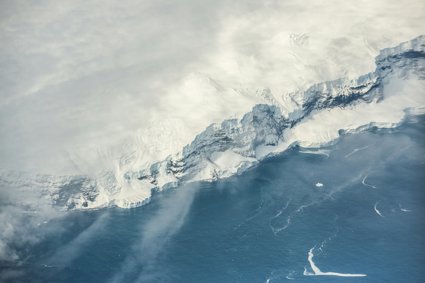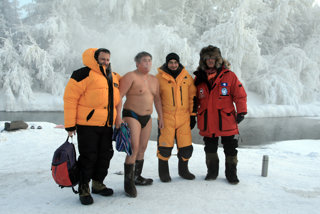
Lesson one
Key Questions
How cold is cold?
When and where are places coldest?
Aims
-
Introduce the idea of extreme cold, and identify a continuum of cold
-
Discuss where and when students have been the coldest
-
Identify a range of factors which affect how cold we ‘feel’
-
Begin to think about how cold affects us
Starter
Show a few images of cold places.
Ask your students the question: When and where is the coldest that you have ever been, and what were you doing at the time?
Hand out the Coldest Stories sheet. This contains a selection of over 50 real stories from geographers who were contacted in December 2013.
Students could be asked to use these sheets in various ways depending on the time and materials available to you.
Use the Coldest Stories Discussion Prompt sheet to guide a range of discussions between groups of students.
A blank map of the world is also available, if students would like to plot the locations and try to spot any patterns in the locations mentioned.
Some discussion on the use of temperatures below freezing might be appropriate. Students might be interested in the confusion that these have caused in people, linked with a lottery ticket.
Would the students have been so easily confused ?
Main Activity
Pose the question: How cold is cold?
What we might think of as cold, someone else might think was very warm. It also depends on our own susceptibility to cold, and how good our clothing is at keeping us warm, as well as what activity we are doing at the time. Some people ‘feel the cold’ more than others.
Display the Continuum PPT to guide the discussions.
Use the Cold Card sort to explore varying degrees of coldness, and place them along the continuum. This could also be adapted into a ‘living graph’ activity, where students arrange themselves from warmest to coldest.
Show the forecast and current conditions for Oymyakon, Russia. - where does that fit in the order that the students have decided on?
What factors make a place cold? – lead a short discussion on this topic, which will also form the basis for the second lesson in the series.
If appropriate use ‘The Cold Factor’ sheet to help produce a mind-map.
One discussion could include the students appreciating the difference between other places which are at the same latitude as their own town or city, perhaps using Google Earth with the lines of latitude and longitude visible (add them as an option from the VIEW menu) alongside a site showing current temperatures (example map) - click to add Weather Stations to show how temperature drops from West to East from the UK, and across Scandinavia into Russia.
One of the key factors in determining how much cold a place experiences is something called continentality. This refers to the distance that a place lies from the sea, and the direction that winds most often arrive at a place. Places that lie further from the sea tend to have more extremes of climate, as land and water heat up and cool down at different rates. Winds blowing over the sea tend to be warmer, and carry more moisture than those blowing over the land. This decreases the stability of the air close to the ground, increasing the chance of cloud and rain. Siberia has a very cold and dry climate as a result of its continentality.
Explore the factors listed on the ‘Why are places cold?' sheet – these could be cut out and arranged in order of their importance, or classified into ‘primary’ and ‘secondary’ factors.
Which of them are most relevant to your school’s location? How do the factors influence the temperature of a place?
Extension Task
How does cold become part of an area’s culture?
When people live in a place which is affected by extremes of climate, a great deal of their effort is spent in surviving, and thriving in the conditions. It affects their daily routines, the food they eat (and how it is obtained), the clothes they wear, the stories they tell, and the houses they live in.
Many indigenous peoples in the Arctic were nomadic as they followed animals such as reindeer, on which their culture as well as their food depended. This led to animals being an important part of everyday life, and therefore songs and stories. For these people, winter is an important element of their lives. Music and songs are played on instruments made from animals e.g. skin drums played by shamen, and songs mimic their travels (such as the joiking of the Sami)
What does winter mean to you?
Plenary

What is going on here?
How does this connect with what has been discussed during the lesson?
The temperature when the picture was taken was -52 degrees. Why is the water not frozen?
Homework Task
It is often said that the Inuit have many words for snow, but there are also lots of ways that we can get across the idea that it is cold, from ‘perishing’, to ‘sub-zero’. Challenge students to create the best word-cloud of words and phrases which mean ‘cold’. Remember to use a ‘cool’ colour scheme too.
Additional suggestion
With the ability to stream music into the classroom using Spotify and internet radio / music apps, it should be possible to play appropriate music for the regions that the Pole of Cold team passed through as background as groups are arriving / leaving / working.
Some suggested musicians to search for include:
Mari Boine – Gula Gula
Agnes Buen Garnas – Rosensfole
Per Henderak Haetta
